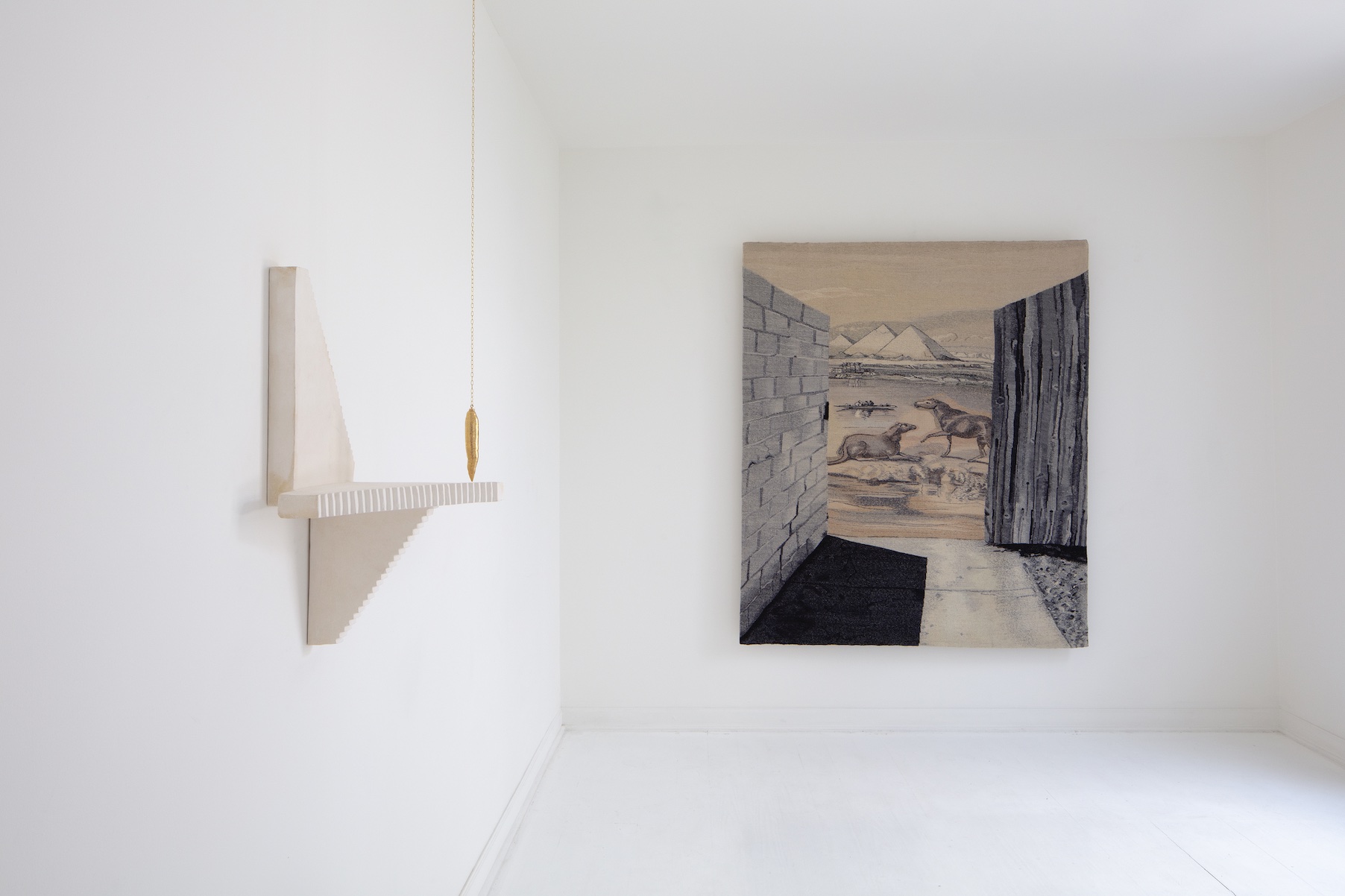
Review
The Salt Remains from Another Era. On 'Under the Volcano' by John Isaacs at Travesia Cuatro
by Bruno Enciso
Reading time
4 min
Travesia Cuatro gallery showcases Jason Isaacs' (UK, 1968) solo exhibition. Its title is taken from the eponymous novel by Malcolm Lowry, published in 1947, which unfolds in Mexican territory. Besides serving as a possible hint towards the project's intention to match the host country, this title also nudges us to redirect our attention to another era. The focus does not center on the book's timeline but on the lifespan of a volcano: an ancient, dormant presence that predates any civilization. The exhibition text states that the artist visited Pompeii in 2023. The complete obliteration of this site and its neighboring town, Herculaneum, due to the eruption of Mount Vesuvius, frames the narrative explored in this exhibition.
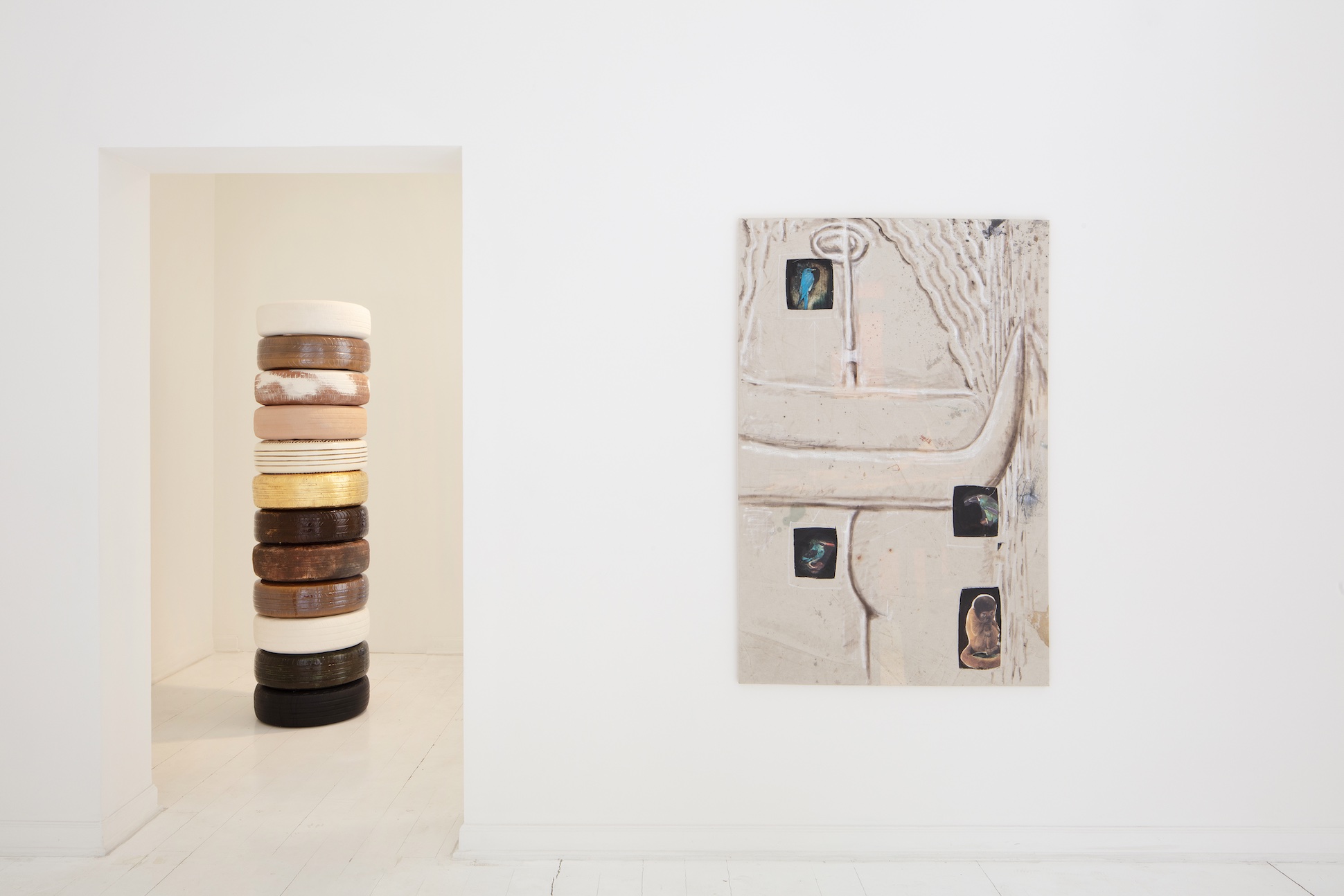
The artworks arise from Isaacs' methodologies, which he has consistently developed throughout his career spanning at least three decades. Everything emerges from an inquiry into the conception of history, of the ways it shapes narratives, and its relationship with value and meaning production. The artist’s technique range is wide. Though high durability materials are preeminent, each piece’s configuration pushes them into spheres of fragility and delicacy. While many borrow from codes of painting and sculpture, each work brandishes its uniqueness. They are not linked by any commonality, at least not explicitly. Interactions are not based on literal interpretations but on reverberations between each piece's timelines. The collapse between the old and the new proffers a gaze which cautiously maneuvers among ruins.
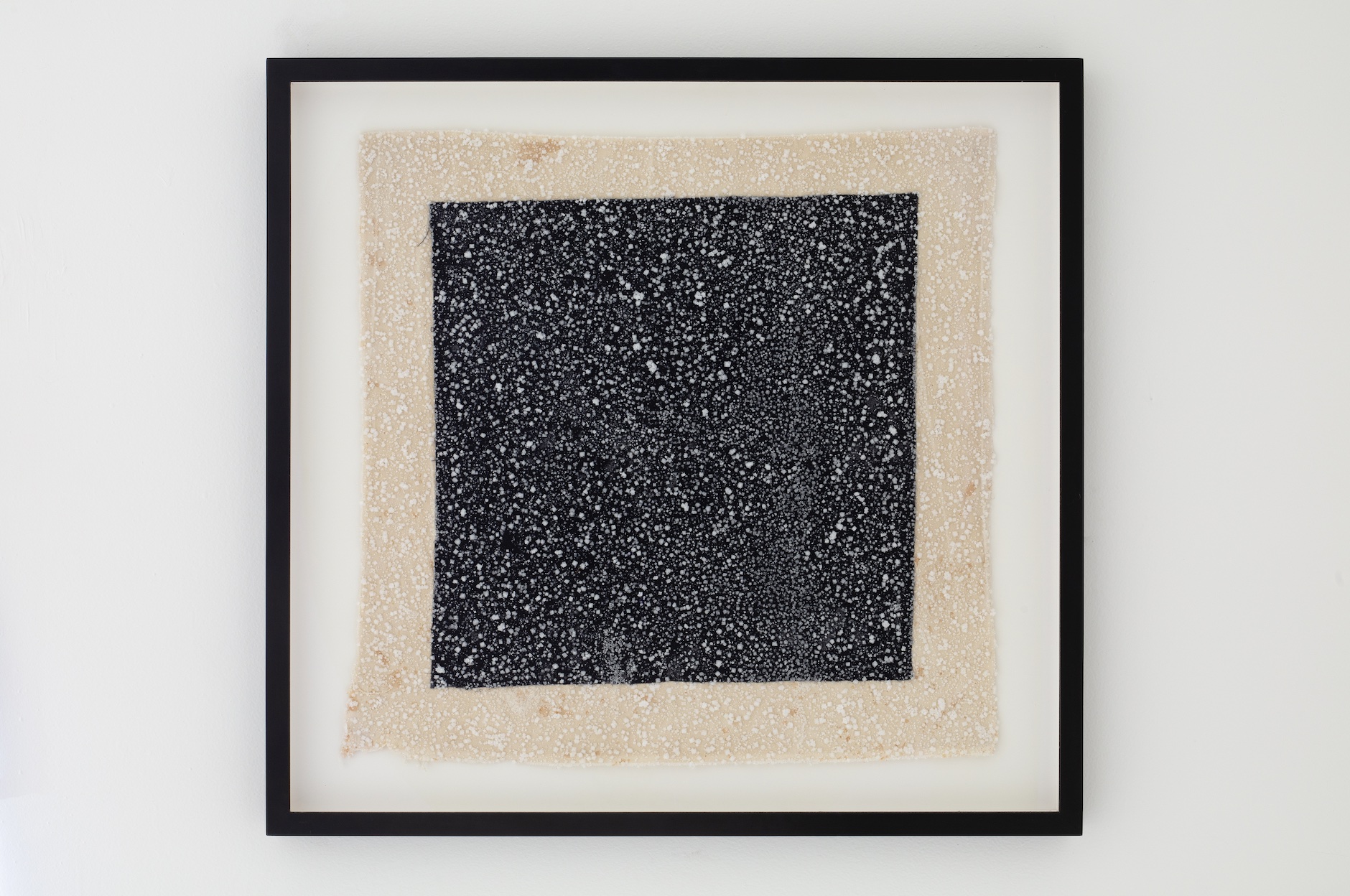
One piece that appears most intriguing to me seems to be a replica of Malevich's black square, a staple in the history of painting and a cornerstone of the Suprematist movement. Regardless of the influence the painting had in rethinking the medium's potential, the artist appears to have revived it primarily due to its durability over time. Every reading of this piece not only feeds back into its density and possible meanings but also contemporizes it, bringing it to life across various periods of time. Before this transformative nature of time, instead of merely accumulating it, the artist has invoked the specter of the volcano. The entire surface of the painting is coated with tiny crystals, a delicate saline-mineral mantle whose transparencies and clumps prevent the viewer's eyes from fully savoring the pictorial argument.
Hardened by its granulated coating, the painting can no longer solely be appreciated as a canvas; its frailty now requires a space encased in glass to contain the remnants of the multiple layers of time, previously transformed, now petrified. There is a certain allure to the flicker produced by all these random grains of salt of different levels of intensity. These glistenings do not follow the geometrical constraints of either the frame or the carefully cut facets of a diamond. They invoke a tense relationship concerning the possible value of this object: Are we facing the relic of a trans-temporal civilization or an unknown object, a fragment of earth which captivates a geological gaze? Each of the pieces differently reverberates and answers this question, and all the responses are equally fallible.
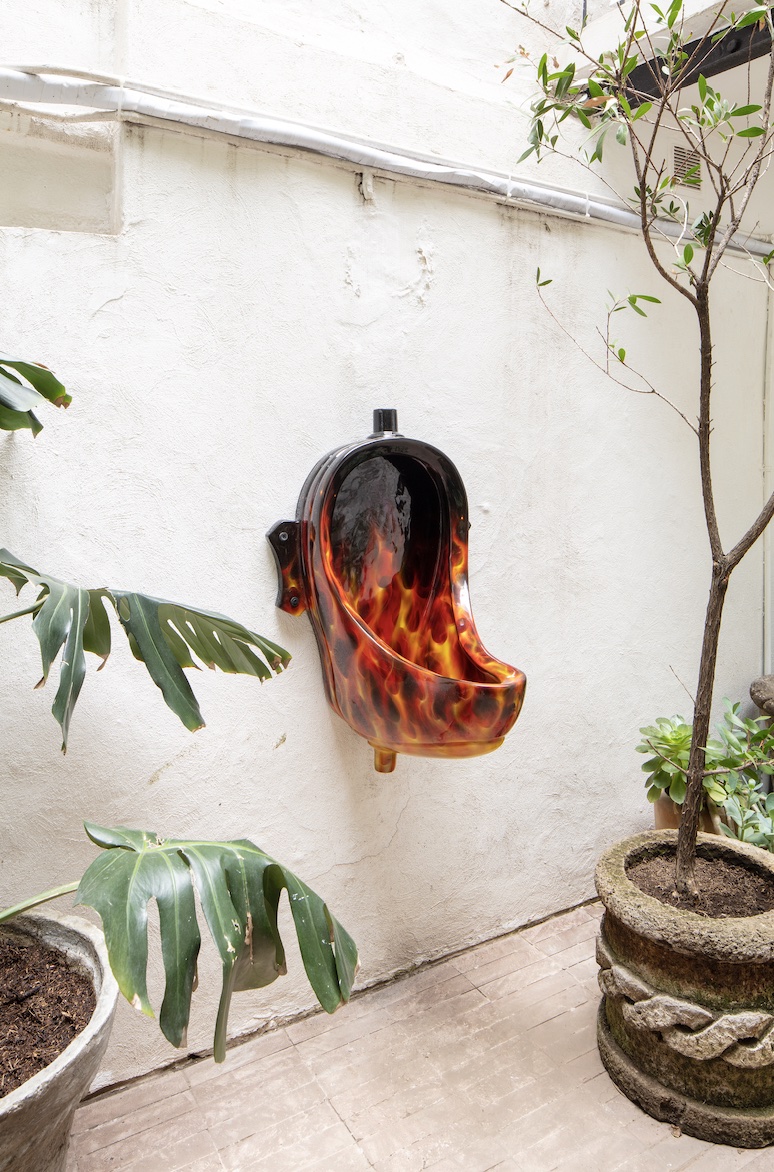
While the readings I find most intriguing deal with the conceptual games derived from the varying materialities present in the works, it is worth noting the semantic-linguistic dimensions adopted by the artist to initiate pivot points, riddles, and ironies to destabilize and even prevent the production of an absolute historical sense anchored in these objects. A sharp and strange humor that has characterized his work and those of other artists from the YBA's (Young British Artists) movement. At the center of one of the rooms, for example, we find an apparently realistic foot of superhuman proportions, simultaneously decomposed and crystallized by the effects of the volcano. This foot serves as a morbid and futile vase carrying a bouquet of brittle, dried out flowers. Do these flowers transform the room into an infamous entrance to a ruined museum, or are they a kind of mournful monument to a lost civilization? These images are lucid and stimulating but also mocking. They are skeptical towards anyone who wishes to attribute a specific meaning to them.
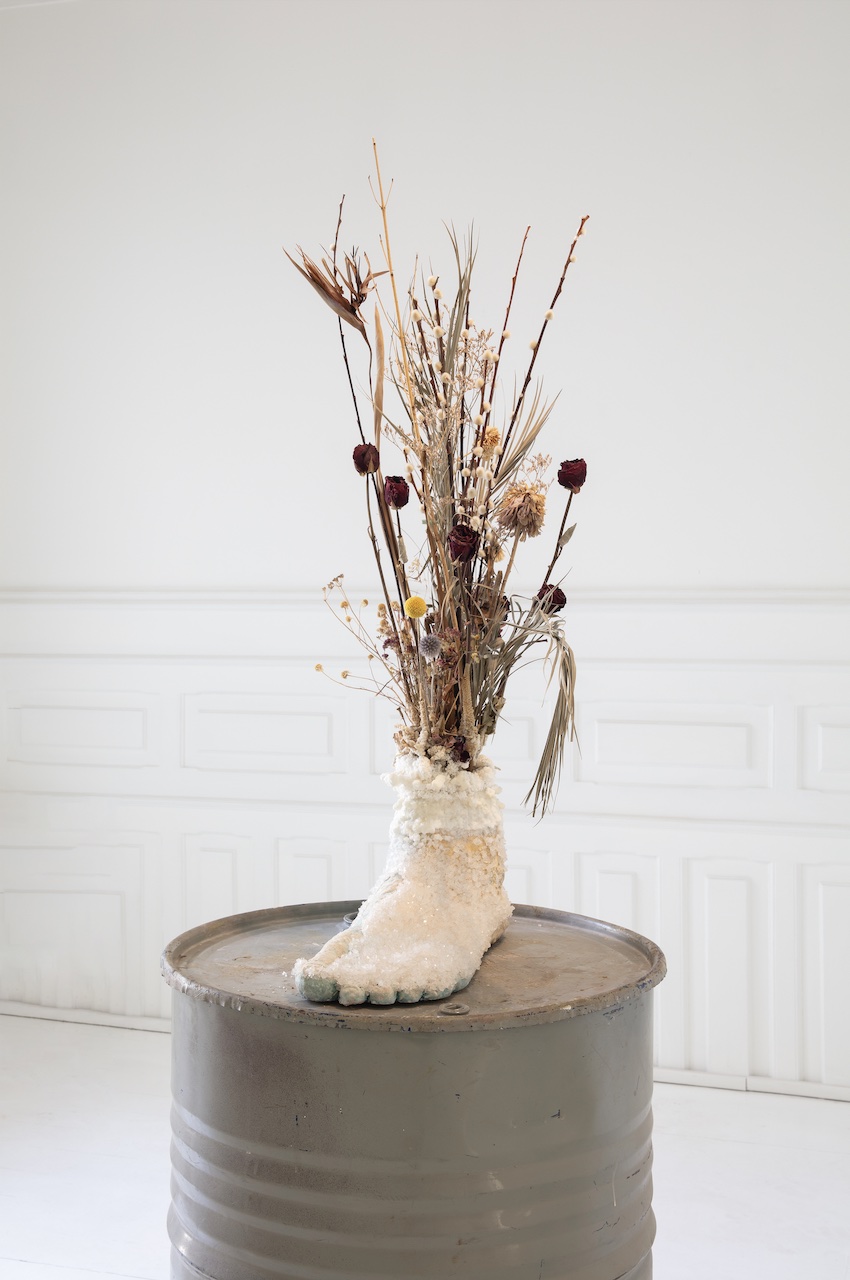
Visiting this exhibition implies being willing to delve into an archaeological curiosity that freely associates and pays attention to detail. Although primarily constructed with identifiable figures, a thick layer of solidified ash dramatically alters all its visual and discursive properties. Human and animal presence bring forth, each from a different level of depth, a hesitating statement insisting on the ephemeral nature of civilizational work in the world; as ephemeral as its transient regimes of meaning. In this hyper-mineralized, desert-like ground, no poetics of the new can flourish.
Under the Volcano can be visited until July 13, 2024.
Translated to English by Luis Sokol
Published on April 27 2024